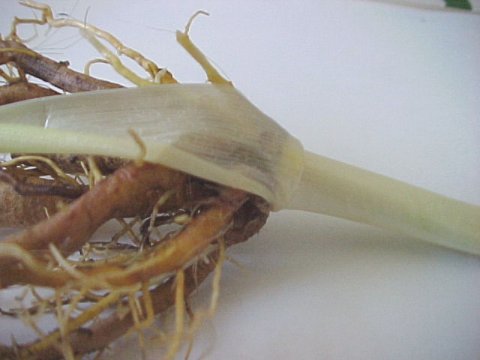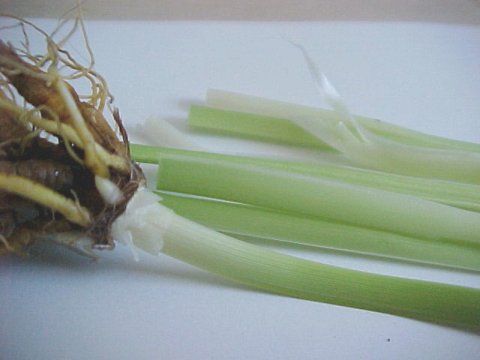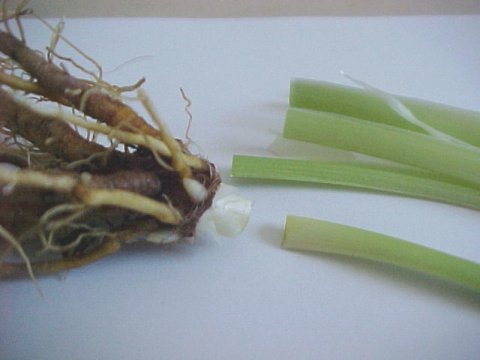Suggested Way to Reduce the Risk of Introducing Rust on New Daylilies
Plants may then be dipped in fungicide if desired and grown on, preferably indoors or in a greenhouse. A safe period of isolation from existing plantings has not yet been determined, but a minimum of six months has been suggested. The above method is not guaranteed to prevent the introduction of rust on new plants, but it is expected by plant pathologists and daylily growers to greatly reduce the likelihood. The removed leaves should be placed in a plastic bag and disposed of as they may be carrying spores or internal mycelium. Inexperienced gardeners should be aware that plants which have been shipped and transplanted are under a great deal of stress, and the procedure illustrated here may add to that. Gardeners who have tried this method so far are reporting that the plants have done well, but there is a theoretical element of risk and this should be weighed against the desire to avoid bringing daylily rust into one's garden. A more detailed description of this procedure is available here. (Please note this link will take you away from this site - use the back button on your browser if you wish to return here or use the link provided on the external page).
©2002-2014. Susan Bergeron |


